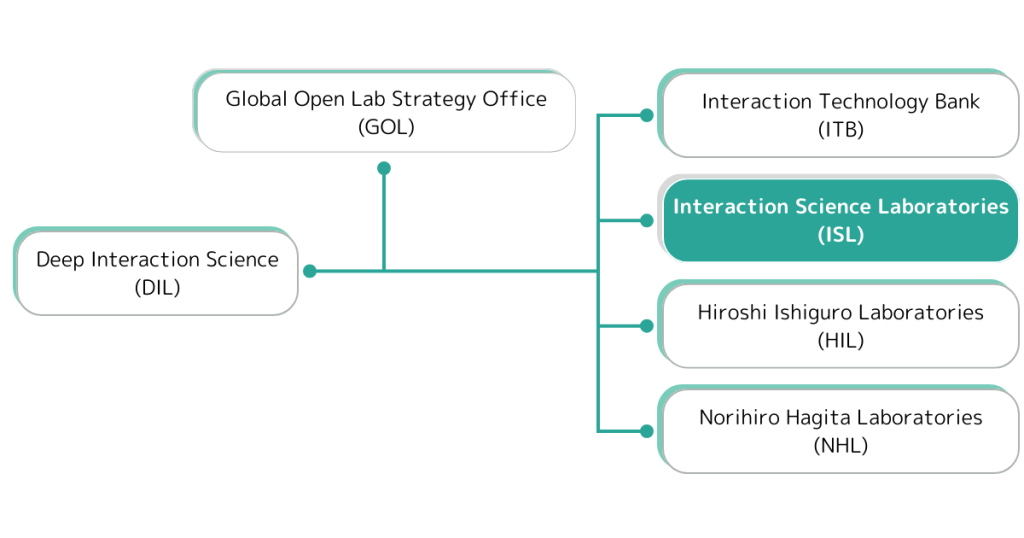We envision a society where robots and avatars live in harmony with humans. We are dedicated to research and development aimed at realizing such a rich future.
The Interaction Science Laboratories (ISL) advance research into human cognitive interaction, including robots operating in close to people, autonomous driving systems that coordinate with humans, and moral interaction.
ISL is a research institute that pursues technologies to build better relationships between humans and robots, as well as between humans and avatars.

Robots are not just machines; they are bridges that connect us to society.
To realize this vision, we are conducting research from multiple perspectives across three laboratories.
Human Robot Interaction (HR)
The Human-Robot Interaction Laboratory's goal is to create robots that can interact with people while carrying out tasks in everyday environments. Our research focuses on sensor networks and cognitive information processing technologies that are necessary for robots to operate in the real world. We also study interaction technologies that facilitate natural and seamless human-robot engagement.
Agent Interaction Design (ID)
The main objective of our laboratory is to study interaction with agents such as physical robots and virtual agents. In particular, we are focusing on social touch interaction to realize natural and acceptable interaction between people and agents to realize various services such as childcare, elderly care, education support, etc.
Ambient Intelligence (AI)
Our research project aims to enhance human ability in cognition, decision, and behavior in daily life, especially in locomotion such as driving and walking. We are investigating model construction of visual, auditory and somatosensory perception and cognition, walking and driving behavior analysis, and information presentation techniques to improve human behavior.
所長ご挨拶

